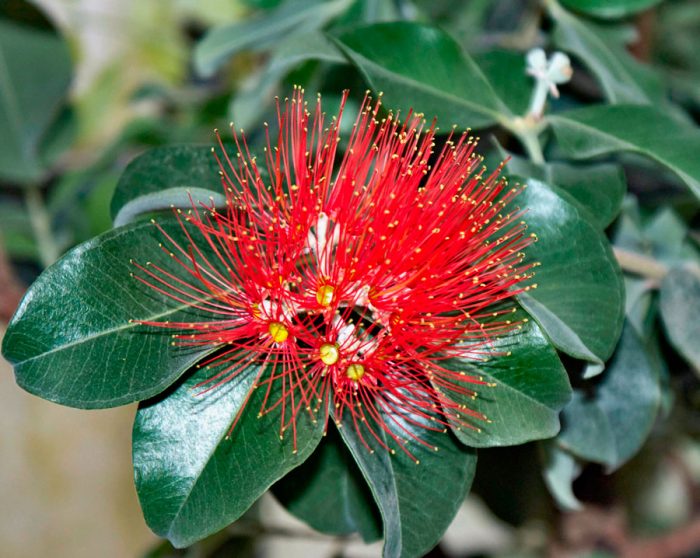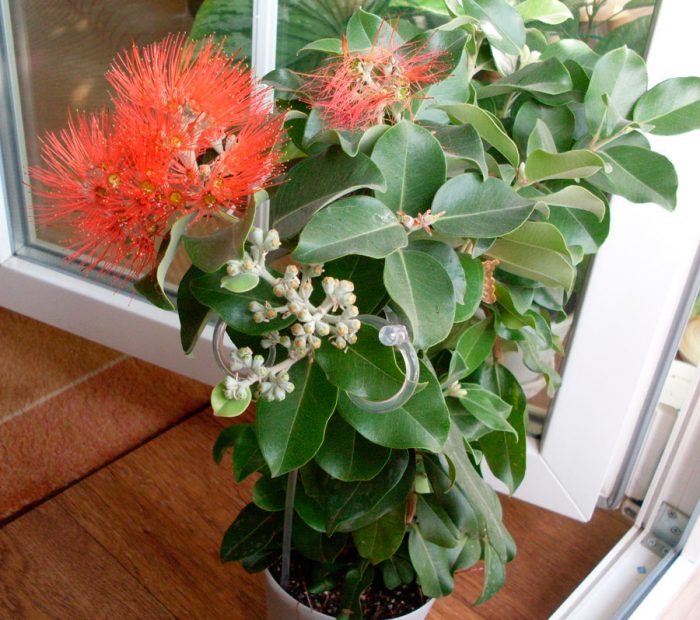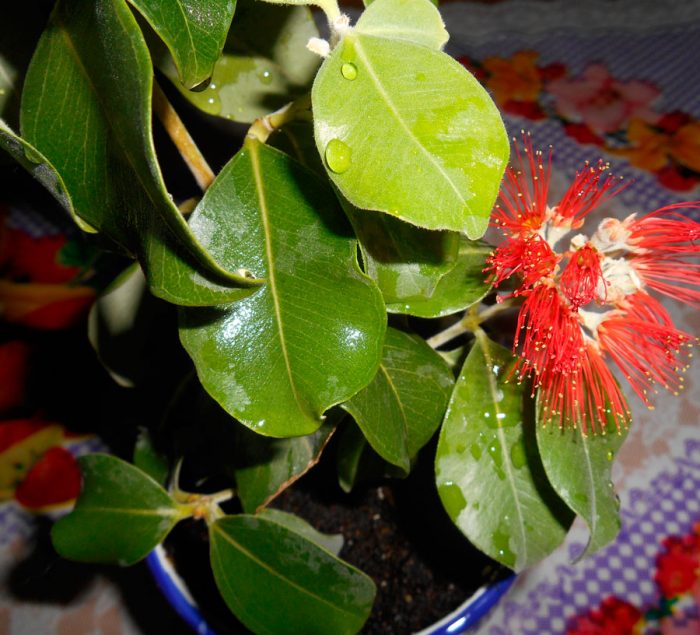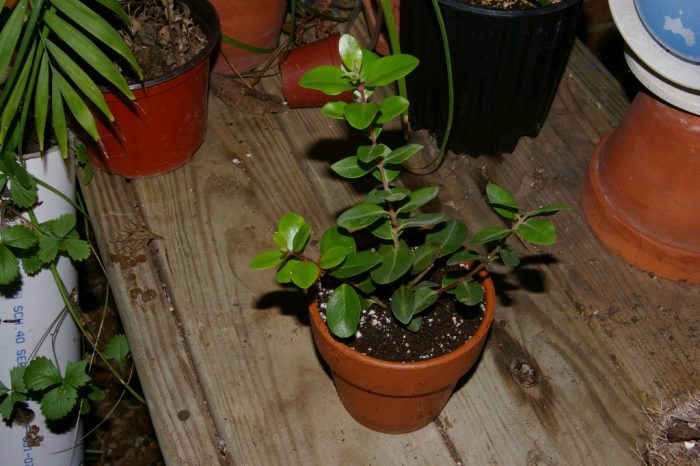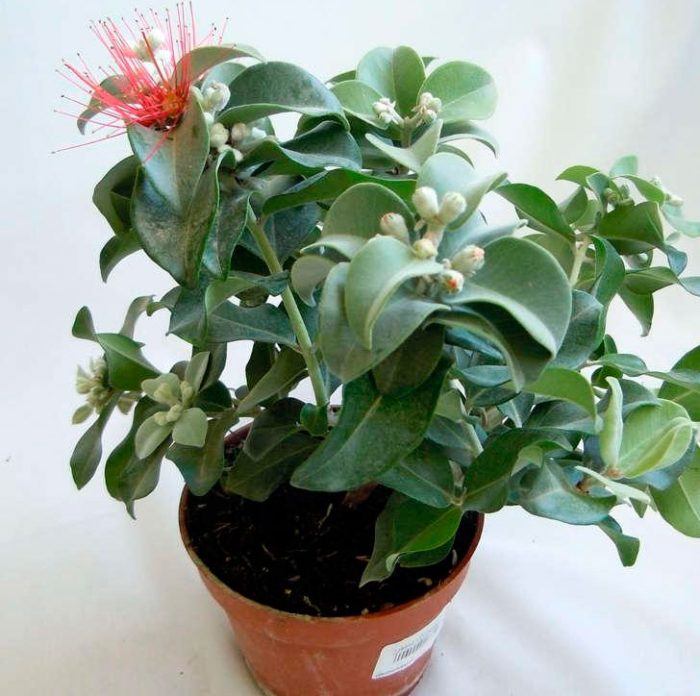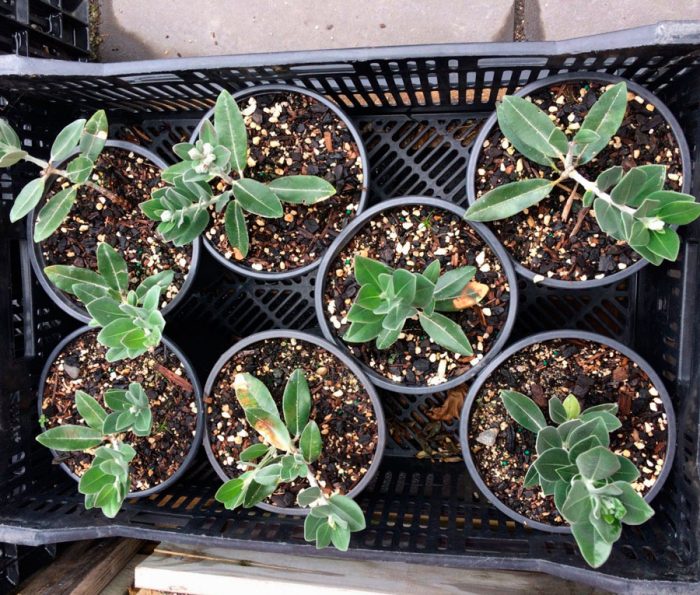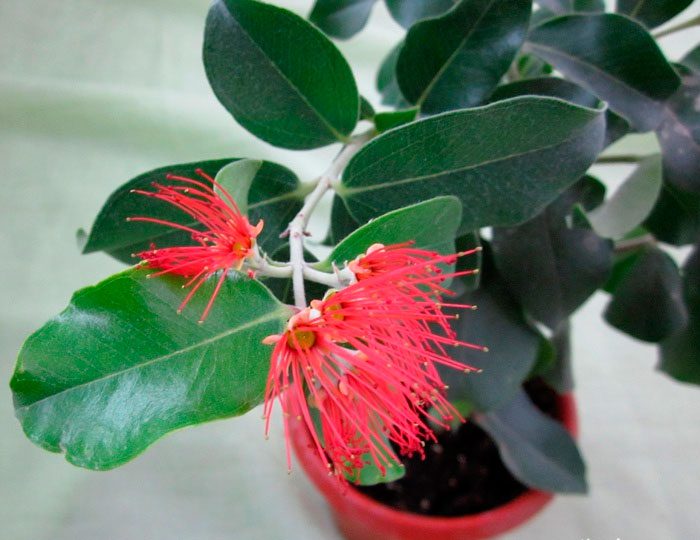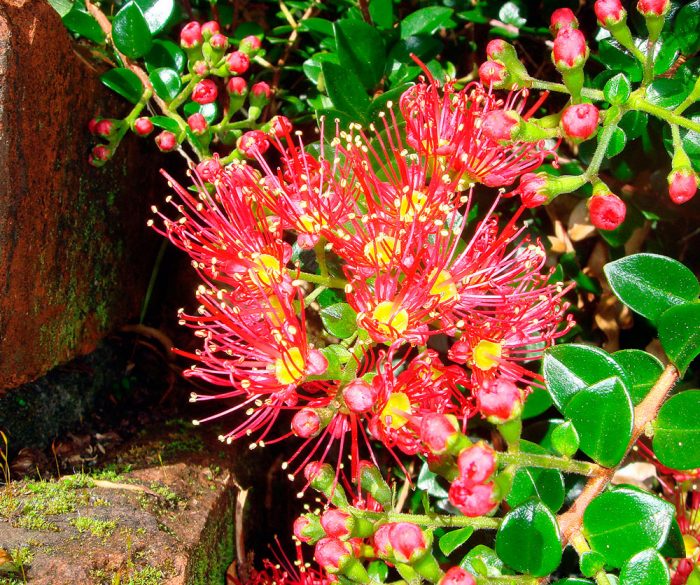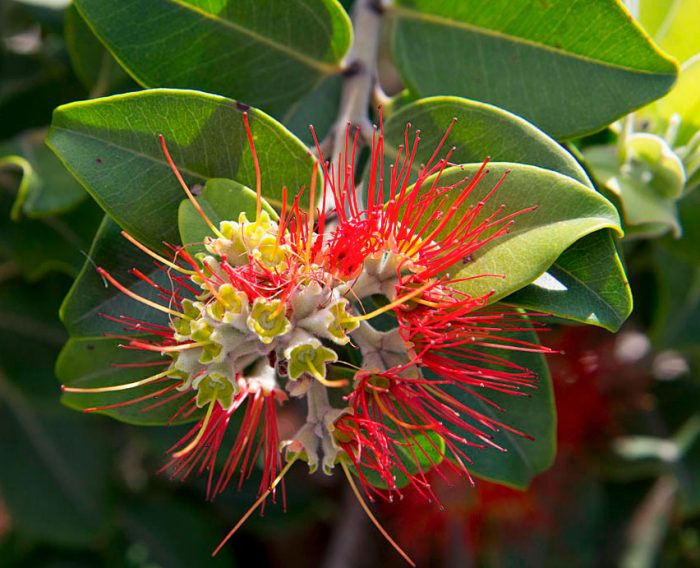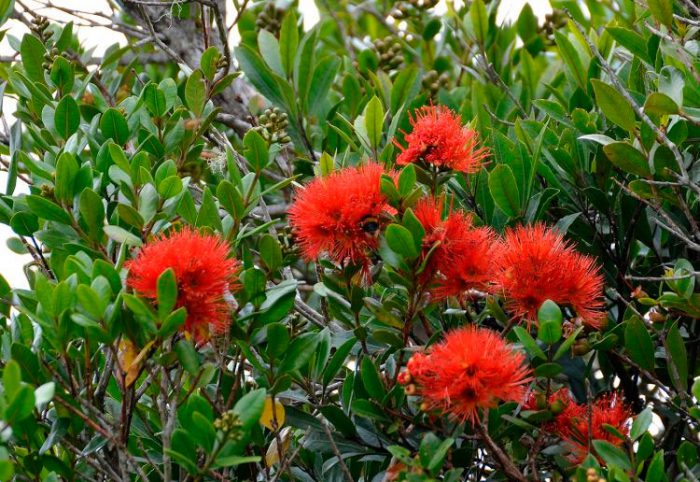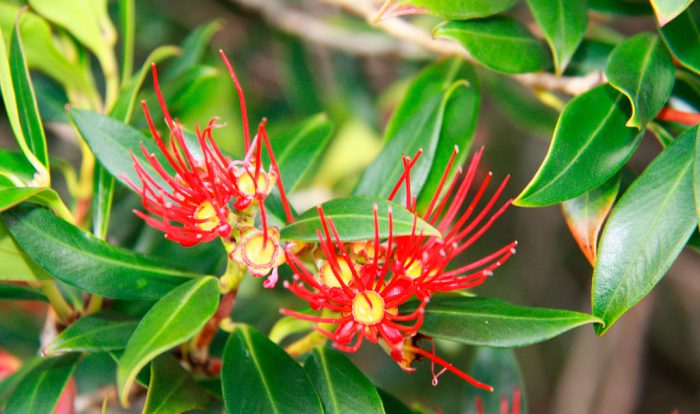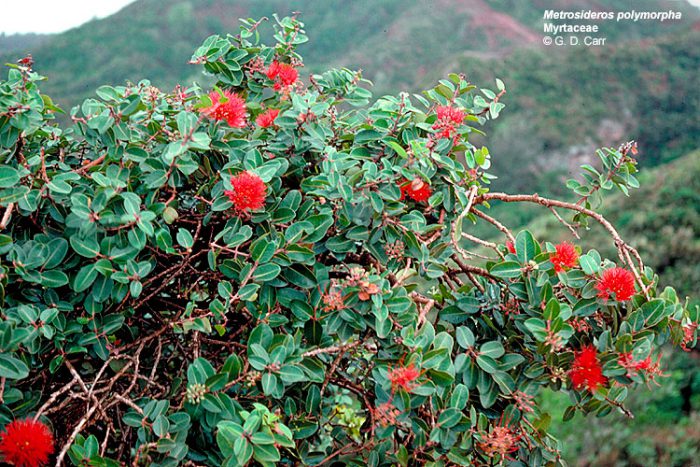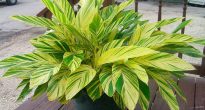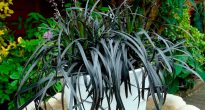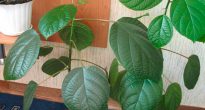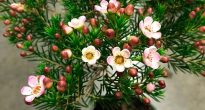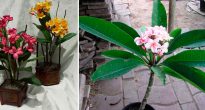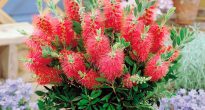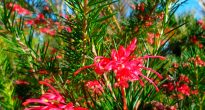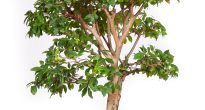Metrosideros (Metrosideros) is a genus of flowering plants. It is directly related to the myrtle family (Myrtaceae). There are 3 subgenus in this genus and more than 50 different species. Under natural conditions, these plants can be found in New Zealand, the Philippines, Australia, the Hawaiian Islands and Central America, as well as in other subtropical and tropical zones. For example, one species can be seen in South Africa.
More about subgenus:
- Mearnsia - unites 25 species of shrubs, trees and vines. Their flowers can be colored pink, orange (yellow), red or white.
- Metrosideros - unites 26 species of shrubs and trees. Their flowers are mostly red.
- Carpolepis - there are 3 species of trees in it, which are semi-epiphytes. Their flowers are yellow.
Only evergreens are found in this genus. Their opposite leaves are short-petiolate. Leathery, dense leaves are entire and have an elliptical or lanceolate shape. Flowers are collected in apical inflorescences, which have the shape of a panicle or umbrella. Small perianths are almost invisible, and pedicels are greatly shortened. The flowers have a very unusual shape. So, their filaments are very long (sometimes longer than leaves) and are painted in rich colors, and small anther balls are located at their tips. When a plant is in bloom, it may seem like it is covered in lush pompoms.
Content
- 1 Caring for metrosideros at home
- 2 Video review
- 3 Types of metrosideros with a photo
- 3.1 Carmine metrosideros (Metrosideros carminea)
- 3.2 Metrosideros collina
- 3.3 Spreading metrosideros (Metrosideros diffusa)
- 3.4 Felt metrosideros (Metrosideros excelsa)
- 3.5 Metrosideros brilliant (Metrosideros fulgens)
- 3.6 Metrosideros operculata
- 3.7 Metrosideros sclerocarpa (Metrosideros sclerocarpa)
- 3.8 Umbrella metrosideros (Metrosideros umbellata)
- 3.9 Metrosideros polymorpha
Caring for metrosideros at home
This plant is not very demanding to care for, but at the same time, in order for it to grow and develop normally in indoor conditions, you should know and follow several rules.
Illumination
Very light-loving plant. Throughout the day, lighting should be very bright with direct sunlight (at least 6000–7800 lux). This plant is able to withstand partial shade, but with such poor lighting it should not be there for a very long time. Indoors, a south-facing window should be selected for it. In warm weather, it is recommended to move to the street or to the balcony, while choosing the sunniest place.
Temperature regime
In the warm season, a moderate temperature is needed from 20 to 24 degrees. Coolness is required in winter (from 8 to 12 degrees).
How to water
Water it abundantly as the soil in the pot dries up. To do this, use well-settled, soft water, which should not contain lime and chlorine. Overflow for metrosideros is undesirable because its roots can easily rot.
With the onset of winter, watering should be significantly reduced.
Humidity
Requires high humidity. It is recommended to regularly moisten the foliage with a sprayer. You can also use other ways to increase air humidity.
Earth mix
Suitable soil should be slightly acidic or neutral, enriched with nutrients, it is easy to pass water and air. You can purchase a ready-made soil mixture for flowering plants. To prepare a suitable mixture with your own hands, you need to combine leaf and sod soil, coarse sand or perlite, as well as peat in a ratio of 1: 2: 1: 1.
Do not forget to make a good drainage layer using pebbles or expanded clay.
Top dressing
You need to fertilize the plant during the growing season 2 times a month. To do this, use a complex fertilizer for flowering plants. Fertilizers cannot be applied to the soil from mid-autumn to mid-spring.
Transfer
While the plant is young, its transplant is carried out once a year in the spring. As the metrosideros grows, it is subjected to this procedure less and less. The specimen, which has a rather impressive size, is not transplanted at all, however, it is recommended to renew the upper layer of the substrate in the container where it grows once a year.
Pruning
After the flowering period is over, the tree needs formative pruning, which it easily tolerates. Young specimens are allowed to be pruned and pinched throughout the year, while the desired shape should be achieved over time.
Reproduction
For reproduction, both seeds and semi-lignified cuttings are used. But this activity is very difficult and may end in failure.
For cuttings, the apical shoots of the current growth are cut off. Each of them must have 3 internodes. For rooting, vermiculite is used, as well as a mini-greenhouse, which must have heating. Before planting, the cut of the cutting must be treated with phytohormones. Such a plant blooms after 3 or 4 years.
They rarely grow from seeds, because after a very short time they completely lose their germination. Store-bought seeds usually do not germinate.
Pests and diseases
Can settle shield or spider mite... After detecting pests, the plant should be given a warm (about 45 degrees) shower. The accumulation of scale insects must be removed with a cotton swab moistened in an alcohol-containing liquid. Then it is processed using Fitoverm, Actellik or other chemical agent of similar action.
The most common disease is root rot. Overflow or waterlogging of the substrate can lead to such problems. And also in the case when there is not enough light, the plant is in the cold or the room humidity is too low, it can throw off all the leaves, buds and flowers.
Video review
Types of metrosideros with a photo
Carmine metrosideros (Metrosideros carminea)
It belongs to the subgenus Mearnsia, and is a native of New Zealand. This liana is evergreen and reaches a length of 15 meters. It has thin aerial roots. Young stems are covered with a thin red-brown bark, with age it becomes darker. Small glossy leaves are colored dark green. They are oval in shape and taper slightly towards the end. Carmine flowers (crimson).
Metrosideros collina
Belongs to the subgenus Metrosideros. Under natural conditions, this plant can be found on the islands of the Pacific Ocean from French Polynesia to Vanuatu.This is a rather tall (about 7 meters) shrub or a relatively small tree. Oval leaves are pointed at the ends. Their front side is painted in dark green and has a grayish tint, and the back side is like felt. The flowers are colored deep red.
In this form, there are 2 varieties that are most popular:
- "Tahiti" is a dwarf tree that reaches a height of no more than 100 centimeters;
- "Tahitian sunset" is a mutation of the previous variety, and its foliage has a variegated color.
Spreading metrosideros (Metrosideros diffusa)
Belongs to the subgenus Mearnsia. Homeland is New Zealand. This vine with long shoots (up to 6 meters). Small leaves are only 2 centimeters long. The leaves have an oval-elongated shape, more like ovoid. The glossy front side is painted in deep green, and the back side is matte. The flowers are light pink or white.
Felt metrosideros (Metrosideros excelsa)
Or, as it is also called, pohutukawa - refers to the Metrosideros subgenus. Homeland is New Zealand. It is a tall (up to 25 meters in height) and strongly branched tree. On the branches and trunk of this plant, you can often see aerial, very long roots. Leathery leaves have an oval-elongated shape. In length, they reach from 5 to 10 centimeters, and in width - from 2 to 5 centimeters. The seamy side of the leaves is covered with a layer of whitish hairs, which strongly resembles felt. The same layer of hairs is found on the buds. The flowers are dark red-orange. There are varieties with pink or yellow flowers.
Metrosideros brilliant (Metrosideros fulgens)
Belongs to the subgenus Mearnsia. This plant comes from New Zealand. This woody vine is branching and very powerful. In length, it can reach about 10 meters, and the trunk is 10 centimeters in diameter. Leathery, smooth green leaves are oval in shape. The flowers are colored dark red.
Metrosideros operculata
Belongs to the subgenus Mearnsia. Originally from New Caledonia. It is a relatively small shrub that can reach a height of 3 meters. The stems have a square cross-section, and silky hairs are located on their surface. The leaves have an elliptical-linear shape. They reach 4 centimeters in length and 1 centimeter in width. Often there are specimens with white flowers, but there are also red or pink ones.
Metrosideros sclerocarpa (Metrosideros sclerocarpa)
Belongs to the subgenus Metrosideros. His homeland is Australia. This is a relatively compact tree, which can reach a height of 10 meters. Leathery, green leaves are elliptical or ovoid. In length, they can reach from 3 to 6.5 centimeters, and in width - about 3 centimeters. The flowers are colored deep red.
Umbrella metrosideros (Metrosideros umbellata)
Belongs to the subgenus Metrosideros. Homeland is New Zealand. This small tree reaches a height of about 10 meters. Green-grayish leaves have a pointed-oval shape. In length, they can reach from 3 to 6 centimeters.
This species is the most undemanding of all to care for. It is very popular with gardeners and has a large number of varieties and hybrids.
Metrosideros polymorpha
Belongs to the subgenus Metrosideros. The homeland is the Hawaiian Islands. Most often this plant is a strongly branching and rather tall shrub, but it also occurs in the form of a tree. The leaves are dark green-grayish to green in color. Their shape is obovate. In length they reach from 1 to 8 centimeters, and in width - from 1 to 5.5 centimeters. Most often, specimens with red flowers are found, but their color is also pink, red-orange or salmon.

